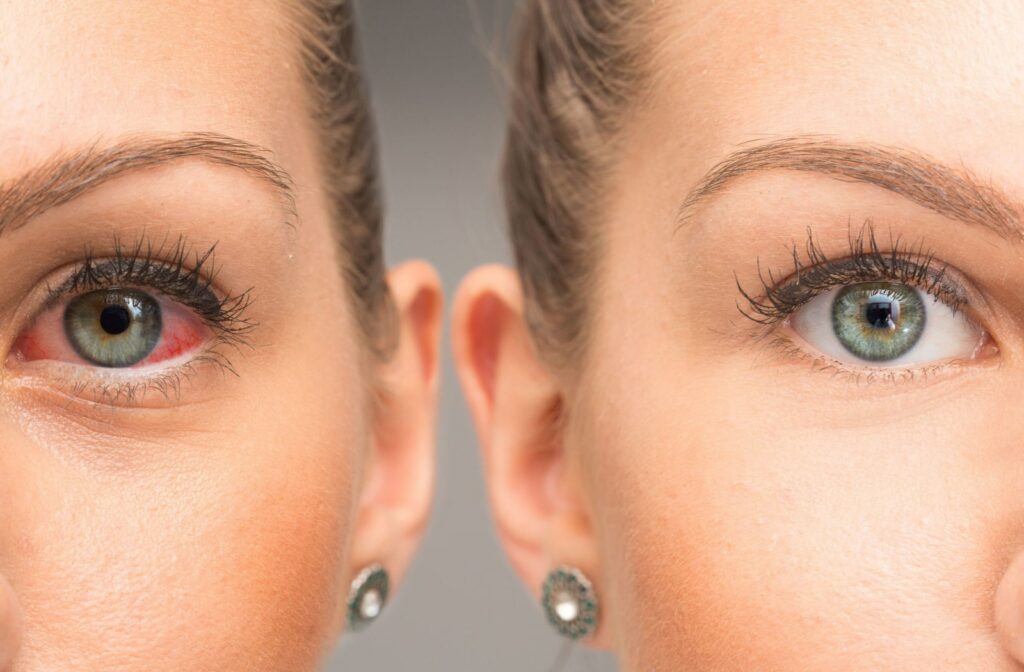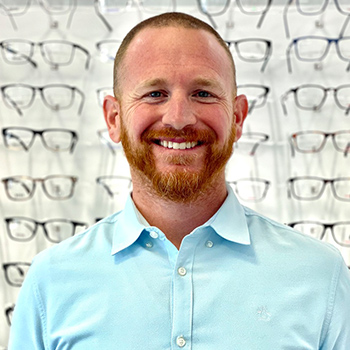When your eyes don’t produce enough tears to keep them moist or functioning properly, you may have dry eye disease (DED). This condition can cause a range of uncomfortable symptoms and even vision problems.
And you’re not alone; DED is a widespread issue that affects millions of Americans annually. If you have dry eyes, a comprehensive eye exam is the best place to start so you can protect your eyes.
The good news is that numerous measures exist to help you maintain your eye health and alleviate discomfort. Your optometrist can diagnose your condition and give you information to help you understand why your tears and their ducts aren’t functioning properly.
What Causes Dry Eye Disease?
The eye’s surface is coated with a layer of tears called the tear film that provides protection and is essential for clear vision. You need tears to moisten, nourish, and wash away debris from your eyes. The tear film is made of 3 distinct and equally important layers. If any one of these layers is out of balance, you can develop DED.
These tears are constantly replenished by the glands lining your eyelids to maintain moisture level and ensure clear vision. When insufficient tears are produced, you may develop dry eyes and discomfort.
Risk Factors
One of the primary causes of DED is aging, which is especially true for those experiencing perimenopause or hormone fluctuations. As you age, your eyes stop producing the tears needed to maintain the tear film.
Other causes and risk factors include:
- Autoimmune diseases, such as rheumatoid arthritis, lupus, Graves’ disease, diabetes, scleroderma, and Sjögren’s syndrome, can lead to decreased tear production
- Not blinking regularly when reading or looking at screens
- Dry environments
- Wearing contact lenses
- A variety of medications
- Sun exposure
- Smoking
- Cold and allergy medications
- Heat or chemical burns
- Previous eye surgeries
- Eye drops for another eye disease
- Low intake of vitamin A and omega-3 fatty acids
Dry Eye Symptoms
Symptoms of DED include:
- Blurred vision
- Redness
- Burning
- Itchy eyes
- Gritty feeling
- Light sensitivity
If you have any of these symptoms, schedule an eye appointment as soon as possible. You don’t have to live with uncomfortable dry eyes. Your optometrist can help you find the relief you need.
How Is Dry Eye Disease Diagnosed?
There are typically 3 different tests that are used to diagnose DED. These include:
Slit-Lamp Test
To prepare your eyes for a slit-lamp test, your optometrist will first put in drops to better see your tears. Then, using a special microscope called a slit lamp, they’ll examine your eyes and eyelids and check if your tear ducts produce enough tears.
Schirmer’s Test
Another test that looks for the amount of tears produced is Schirmer’s test. Your eye doctor will put numbing drops in your eyes, apply special paper strips on the corners of your eyes, and ask you to close them for 5 minutes. After the time has passed, they will see how much moisture is on the strips to determine how well your eyes make tears.
Tear Break-Up Time
The tear break-up time tests your tear film to determine how long it stays on your eyes after you blink. The optometrist will place drops of dye in your eyes, then ask you to blink to spread the dye evenly over your eye and have you look forward without blinking. They’ll watch to see how long the dyed tear film stays on your eye and how much of it is covered. If it disappears fast, it may mean you have DED.
Available Treatment Options
There are several available treatment options for DED. Mild cases of dry eyes may improve with over-the-counter eye drops. You may also be prescribed medicine that helps you make more tears.
If your tears are draining too quickly, punctal plugs can be placed in the small holes in the inner corner of your eyes (tear ducts) to help keep your tears in your eyes longer.
Sometimes DED can occur because your lower eyelids are too loose, causing tears to drain too quickly. In this case, your eye doctor may suggest surgery to fix your eyelids and help your tears stay in your eyes.
Tips for Preventing Dry Eyes
Sometimes, making a simple lifestyle change can improve your dry eye symptoms. You may benefit from:
- Not smoking or quitting smoking
- Avoiding windy conditions and air conditioning
- Using a humidifier
- Limiting screen time and taking breaks
- Wearing wraparound sunglasses
- Drinking 8 to 10 glasses every day
- Sleeping 7 to 8 hours a night
- Blinking more often
- Cleaning your eyelashes regularly
- Applying a warm compress
Prevention Is the Best Medicine
The best protection for your eye health is regular check-ups with your optometrist. Come see us at Dr. Charles Bittel’s eye center in Yorba Linda for an eye exam. Our dry eye rejuvenation program can help alleviate dry eye symptoms and provide long-lasting relief.
Call us today to book an appointment.


